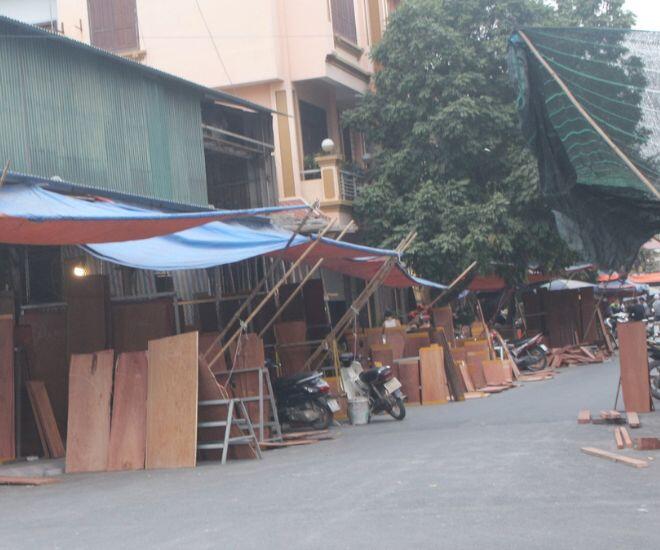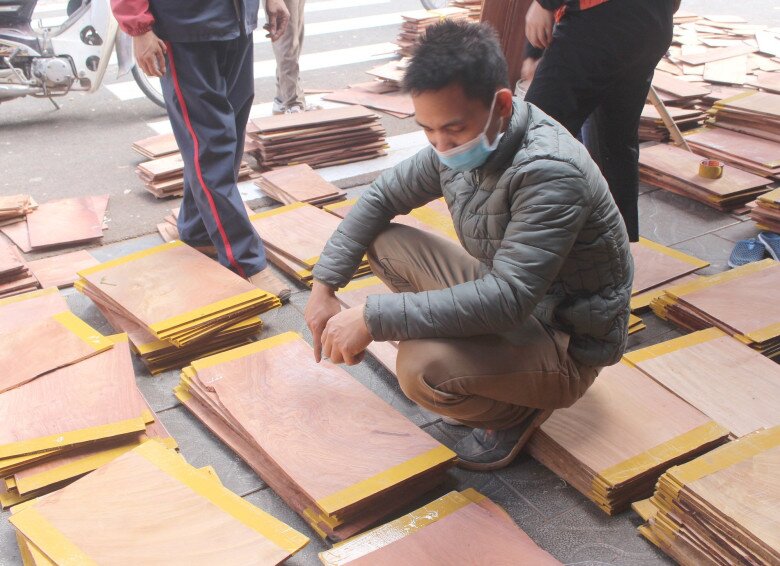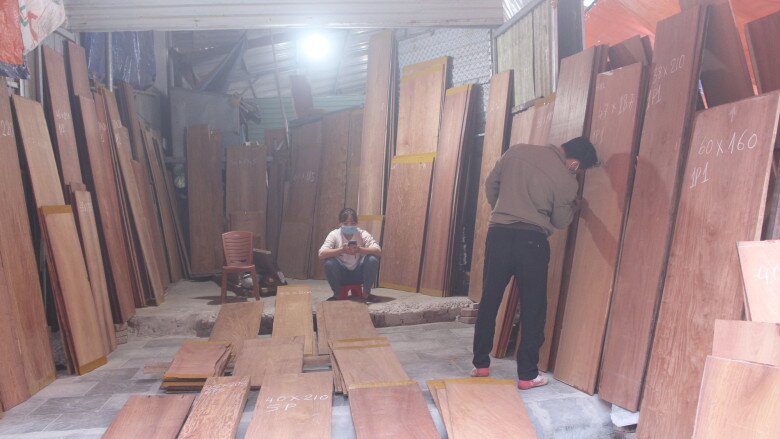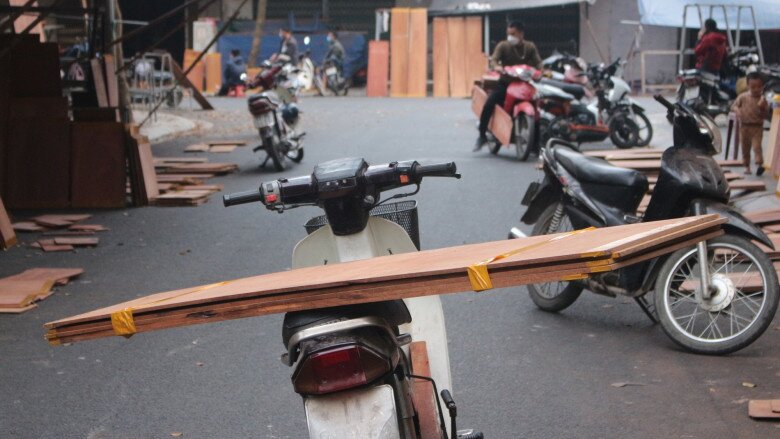Nestled in Dong Beo village, Phu Khe ward, Cho Van has become a familiar address and sometimes surprises many with its specialty. Initially, this was just a place for the villagers of Phu Khe’s woodworking village to sell wood. Gradually, the bustling merchants and buyers from all over poured in, forming a unique and specialized market with hundreds of kiosks and shops selling Trach wood.

The birth and development of Cho Van are closely associated with the long-standing woodworking tradition in Bac Ninh. This land boasts many famous woodworking villages such as Huong Mac, Dong Ky, Ngoc Loi, and Dinh Trang. The demand for wood raw materials for crafting and producing woodworking products among locals is enormous and diverse. Therefore, different wood markets have formed to meet specific needs.
While Cho Huong Mac and Cho Tan Bao, located opposite Cho Van, offer a variety of wood scraps, wood chunks, and many other types, Cho Van has positioned itself as the only destination for those seeking to buy Trach wood boards. This differentiation helps buyers easily find the materials they need, saving time and effort. Those looking for boards to make tables, beds, and cabinets usually go to Cho Van, while those needing wood scraps or other types of wood will visit the neighboring markets. This is a specialized business model that optimizes supply and demand in the traditional woodworking industry.

The wood boards at Cho Van are carefully arranged and marked according to various sizes, making it convenient for buyers to choose. A unique aspect of the trading method here is that wood is not sold by weight, as is done in some other local markets. Instead, customers directly inspect the merchandise, measuring the specific width, length, and thickness of the boards to calculate the price.
A shop owner at Cho Van shared that the price of Trach wood boards here is usually higher than that of other types of wood sold in nearby markets. This is due to the intrinsic value of Trach wood and the size of the boards on offer. To obtain a large Trach wood board, the source tree must have a very large diameter. The larger the tree, the more beautiful and exquisite the wood grain, and consequently, the higher the value of the product. Wood buyers at the market confirmed that the Trach wood boards here range in price from a few hundred thousand to several million Vietnamese Dong per board, depending on size, thickness, and wood grain.

Cho Van operates almost all day, from the early morning to late at night, continuously serving the needs of the local woodworking villages. However, the busiest and most bustling time is usually in the early morning. This is when workshop owners and carpenters flock to find the most suitable boards for their work. Some buy only a few small boards, while others place large orders requiring cargo trucks to transport the wood back to their workshops.
Common sights at Cho Van include locals diligently sorting wood planks and boards in preparation for crafting. After a successful transaction, the precious Trach wood boards are loaded onto motorcycles, tricycles, or trucks and taken to the woodworking workshops. In the hands of talented artisans, they will be transformed into exquisite sets of tables and chairs, elegant beds and cabinets, or unique woodworking art pieces, embodying the cultural heritage of the woodworking villages.

As the Tet holiday approaches, the market’s rhythm slows down a bit as carpenters focus on completing orders to meet their deadlines. However, the market’s vibrancy is maintained, evident in the shop owners’ joy when they make a sale, contributing to the overall development of the woodworking industry.
Cho Van has been established and thriving for over a decade now, growing from a handful of small shops to the bustling market it is today. With its specialization in Trach wood and its crucial role in supplying raw materials to Bac Ninh’s famous woodworking villages, Cho Van is not just a trading hub but also a unique cultural symbol representing the diligence, skill, and long-standing woodworking tradition of the Kinh Bac region.































